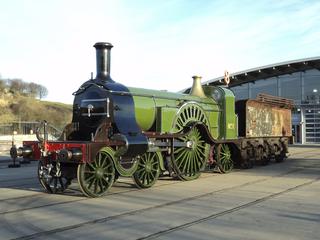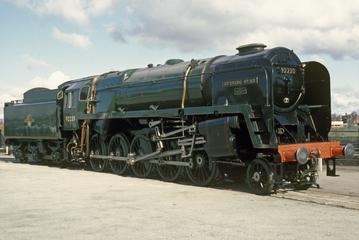
British Railways D200
Diesel-electric locomotive, British Railways, Type 4 Class 40 No. D200 (later 40122), built by English Electric in 1958.
More
The Class 40 locomotives, built by English Electric Company, were one of British Railways’ (BR) most successful diesel classes. D200 (like D8000 and D5500) was the lead locomotive of its initial batch for BR’s pilot orders for main line diesels as part of its Modernisation Plan. Ultimately, the Plan’s aim was to replace steam locomotives with diesel and electric traction.
From March 1958 to September 1962 two-hundred Class 40 locomotives were built between Vulcan Foundry and Robert Stephenson & Hawthorns at Darlington (both part of English Electric Company).
D200, which is rated at 2000 HP, was built with a system of four disc-shaped white markers on each nose end, positioned to indicate the type of train being worked. Initially, Class 40 locomotives were used on express passenger services; towards the end of their working lives they found work on secondary passenger and freight services, where they worked for many years.
D200 pulled a demonstration train from London Liverpool Street to Norwich on 18 April 1958, and pulled its final train over the same route exactly thirty years later on 18 April 1988. It entered the National Collection in the same year.
- Measurements:
-
overall: 3.91 m x 2.74 m x 21.18 m, 135 ton
- Object Number:
- 1988-7001/1
- type:
- diesel locomotive
- Image ©
- The Board of Trustees of the Science Museum











